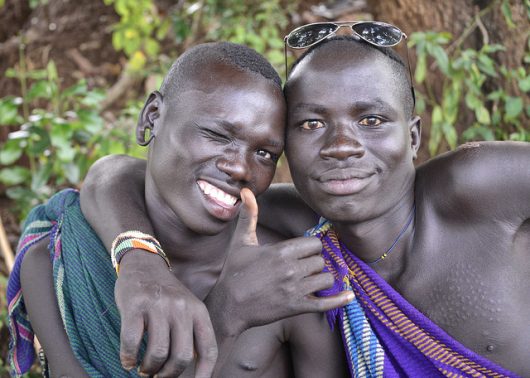Three Common Misconceptions About Poverty in Africa

From U.S. leaders speaking about African countries that do not exist, to people thinking Africa is a single country, misconceptions about the continent and its circumstances are far too common and dangerous to people in need. This past year illustrated this point clearly: most in the public eye do not know what is actually going on there, and when they do, they fail to describe it correctly.
But as the financial conditions in Africa change, so should the concepts and terms used to describe it. Clearing this air is fundamental for the comprehension and, possibly, alleviation of poverty in Africa.
There is no single story, country, color or solution to poverty in Africa.
Africa is not homogeneous; this misconception largely comes from gross oversimplifications by colonists or other invaders (past and present). The inability to accurately describe the large region’s complexities coupled with a historic, persistent desire to control the various narratives there is where wrongful assumptions are made. Thinking it is one country inhabited by people who all look the same or that all African populations are the descendants of slaves is extremely problematic when it comes to helping those in need.
The Sahara Desert makes up a third of the continent, but its exotic wildlife and rare tribes have become more of an icon for the entire landmass’s culture than the other 66 percent of the actual continent. The same can be said of Africa’s immense rainforest, which covers even less of the continent.
The islands on the coast vary by the hundreds: Comoros and Réunion in the east, Ascension and St. Helena south of those, Cape Verde in the southwest and the Canary Islands in the northwest, to name a few. All of these are domains of Africa and their economic diversity goes unrecognized in relation to the continent’s popularized image.
Each country faces different problems brought on by varying systemic, societal and historical issues. Assuming there is a single plan that can “fix” all of Africa is not just naive but severely condescending.
Africa is not poor, just severely exploited (still).
Seychelles, an African archipelago of 115 islands that boasts only 1 percent unemployment, was ranked as the richest nation in Africa last year. A growing population of wealthy people are living and moving to places like Mauritius, an island just east of Madagascar. Africa’s islands are home to many of the world’s wealthiest people, not just Africa’s. On the mainland, South Africa, Nigeria, Equatorial Guinea and Egypt are among the richest countries on the continent.
Some of the poverty in Africa is not by accident, but by design. An estimated $203 billion leaves the continent each year and around $41 billion was made off of sub-Saharan Africa alone last year. The sheer inequality is startling because the amount loaned to African countries ($162 billion) is less than the amount leaving, but nothing is being repaid.
According to a recent report, some of it is attributed to “trade misinvoicing”, where African nations receive an influx of foreign aid but subsequently lose three times that amount from “multinational companies deliberately misreporting the value of their imports or exports to reduce tax.” This means that many resource-rich African countries receiving aid are being manipulated by corporations, disenfranchising populations for denationalized profits.
This continues a history of economic exploitation that African countries have endured for centuries.
Not all tribes in Africa are poor. Or small. Or even “tribes”.
The common conception of African tribes is of black and brown people living in straw huts, hunting for food and thriving off the land. Even though Africa is home to around 3,000 tribes, many encompass populations of countries by the millions and do not live like that at all.
In Nigeria, 20 to 35 percent (approximately 45 million people) of the population identifies with the Yoruba tribe; many have white-collar jobs and live in a city. Many other tribes such as the Pedi, Igbo, Suri, Fulani and especially the Zulu, have become prominent in both size and wealth too, living in cities as taxpaying, working citizens. This raises the question: what is a tribe?
This notable misconception concerns the terminology itself. The term “tribe” insinuates a community of indigenous people, which they are, but it also comes with more negative connotations than the term “ethnic group” which, by definition, is what such populations can also be called. The name “language groups” applies even more because many speakers of various “tribal” languages are only that, speakers of a language, not “members” of a “tribe”.
For example, while it is common to speak about the displacement of various ethnic groups, the displacement of tribes in Africa is lesser known or communicated internationally. The term “ethnic group” tends to conjure empathy, while “tribe” tends to establish a sense of otherness. The ethnic diversity of such a well-populated continent needs a strikingly more complex lexicon to even begin to accurately depict populations that are far from the definition of “tribes”.
Breaking down such misconceptions helps diversify aid by simply being more culturally sensitive and aware. Addressing ineffective communication about poverty in Africa starts with using more accurate and inclusive language. Using precise vocabulary to paint a clear, distinct picture of the complex problems is how more successful solutions are established.
– Toni Paz
Photo: Flickr
